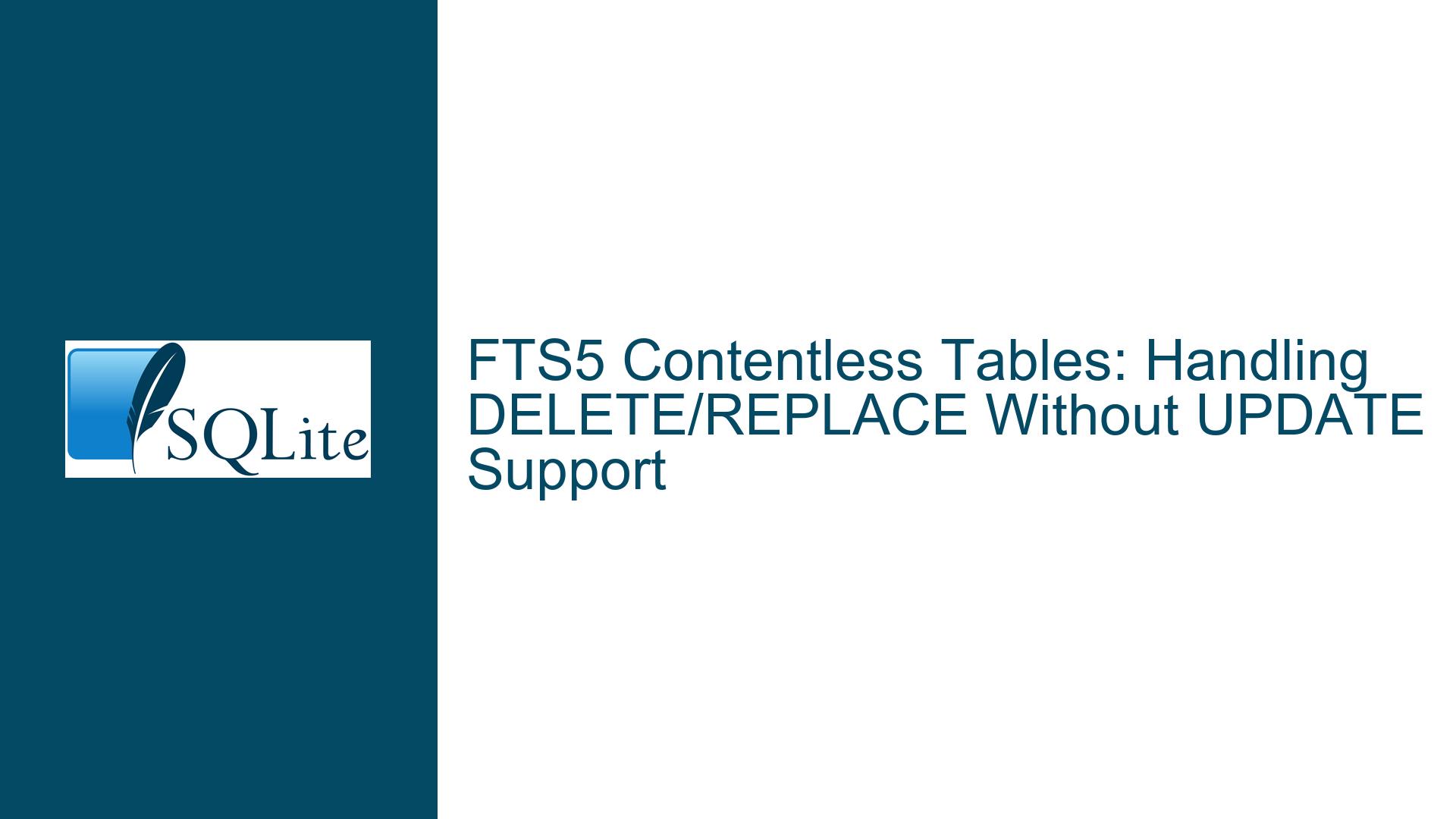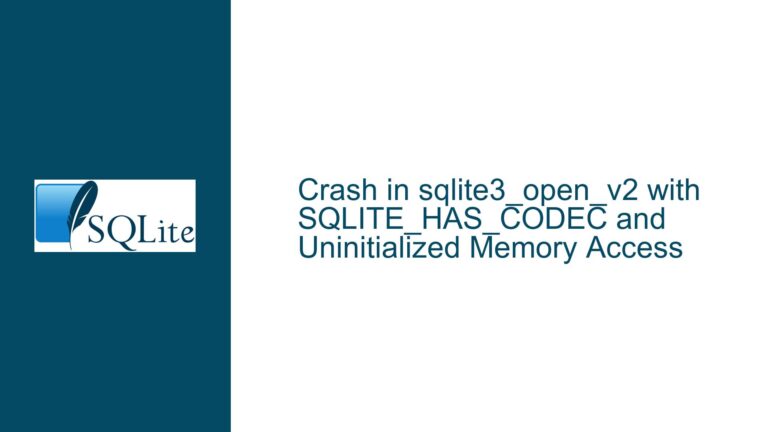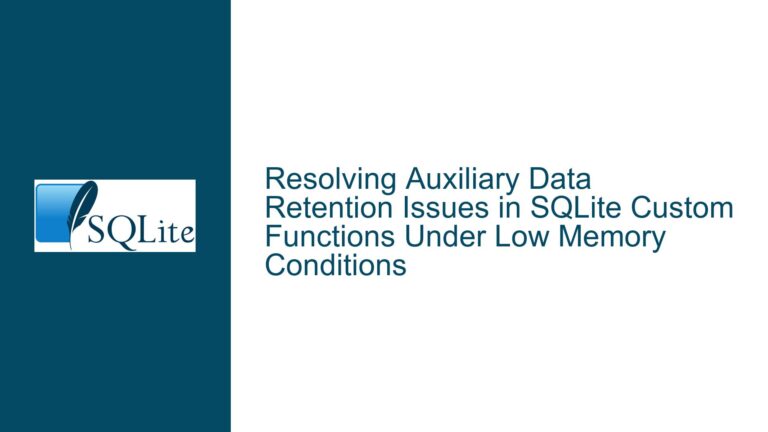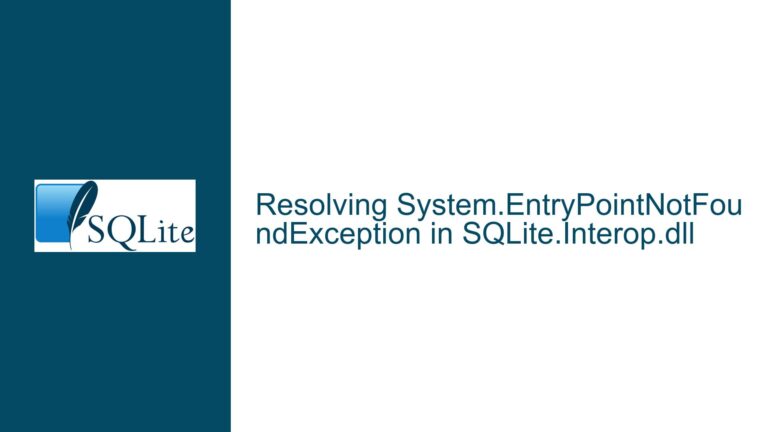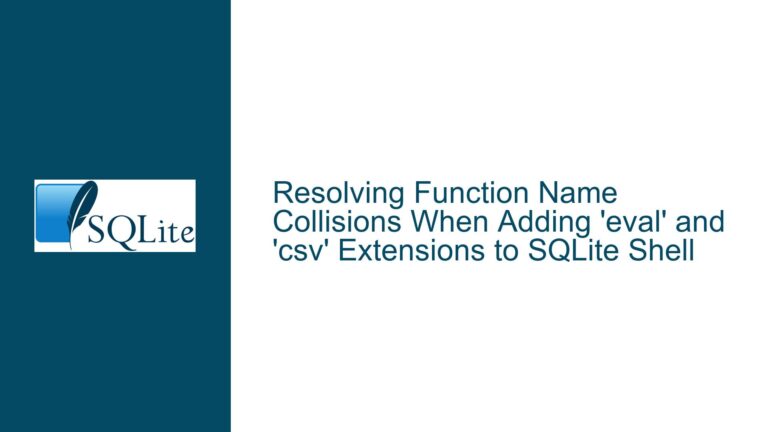FTS5 Contentless Tables: Handling DELETE/REPLACE Without UPDATE Support
Understanding the Limitations of Contentless FTS5 Tables in Row Modifications
The introduction of contentless FTS5 tables with contentless_delete=1 in SQLite 3.43.0 (trunk) marks a significant advancement for full-text search capabilities, enabling direct DELETE and REPLACE operations without requiring external triggers or workarounds. However, this feature does not extend to partial UPDATE operations, creating a gap between developer expectations and actual functionality. This post dissects the technical constraints behind this limitation, explores scenarios where it manifests, and provides actionable strategies to adapt existing workflows.
Architectural Constraints of Partial Column Updates in FTS5 Contentless-Delete Tables
1. The Challenge of Column-Specific Index Management
FTS5 contentless-delete tables (content='', contentless_delete=1) store inverted indexes for text columns but do not retain the original content. When a row is updated, SQLite must recompute the indexed tokens for modified columns and update the corresponding index entries. However, partial updates (e.g., modifying only column b in a table with columns a, b, c) require isolating and removing existing index entries for the updated column while preserving those for unmodified columns.
In standard FTS5 contentless tables, DELETE operations remove all index entries for a row. The new contentless_delete=1 flag refines this by allowing targeted row deletions, but it does not extend granularity to the column level. This limitation stems from the internal data structures of FTS5: inverted indexes map tokens to row IDs and column identifiers, but the storage layer aggregates entries by row, not by column.
2. The Absence of Column-Level Versioning
FTS5 lacks versioning metadata for individual columns. When an UPDATE affects only a subset of columns, the engine cannot efficiently determine which token entries to invalidate. For example, consider an FTS5 table with columns title and body. Updating title requires:
- Deleting all token entries associated with the old
titlevalue for the target row. - Inserting new token entries for the updated
title. - Leaving
bodytoken entries untouched.
Without column-level tracking, SQLite would need to reindex the entire row, which contradicts the efficiency goals of contentless tables. This forces developers to either reinsert the entire row (via INSERT OR REPLACE) or maintain external metadata to track column changes.
3. Transactional Integrity and Index Consistency
Allowing partial updates without full-row reindexing introduces risks of index corruption. If an UPDATE operation fails midway (e.g., due to a constraint violation), the FTS5 index could end up in an inconsistent state where some columns reflect the new data while others retain old values. SQLite’s transactional guarantees require atomicity, which is simpler to enforce when operations affect entire rows rather than individual columns.
Strategies for Adapting Workflows to FTS5 Contentless-Delete Constraints
1. Replacing Partial Updates with Full-Row Replacements
The most straightforward workaround is to replace UPDATE statements with INSERT OR REPLACE INTO ... SELECT queries that explicitly provide values for all columns. This approach leverages the existing contentless_delete=1 support for row-level replacements while avoiding partial updates.
Example Migration Steps:
- Original Query:
UPDATE fts_index SET title = 'New Title' WHERE rowid = 123; - Adapted Query:
INSERT OR REPLACE INTO fts_index (rowid, title, body) SELECT 123, 'New Title', body FROM fts_index WHERE rowid = 123;
This ensures that the body column is explicitly included in the replacement, preserving its existing value while updating title.
2. Enforcing Full-Column Updates via Application Logic
To prevent accidental partial updates, implement application-layer checks that enforce all columns to be specified in INSERT OR REPLACE statements. This can be achieved through:
- ORM Hooks: Use
before_updatetriggers in ORM frameworks to validate that all FTS5 columns are included in the operation. - Schema Validation Scripts: Static analysis tools can scan SQL queries for
UPDATEstatements targeting FTS5 tables and flag them during code reviews.
3. Leveraging External Metadata for Column Tracking
For advanced use cases requiring partial updates, maintain a shadow table or auxiliary columns to track which fields have changed. This metadata can drive conditional reindexing logic:
Implementation Outline:
- Create a companion table to track modified columns per row:
CREATE TABLE fts_metadata ( rowid INTEGER PRIMARY KEY, modified_columns TEXT -- e.g., 'title,body' ); - Use triggers on the base table to populate
fts_metadatawhen updates occur. - Write a batch job that periodically processes
fts_metadataentries, performing targetedINSERT OR REPLACEoperations on the FTS5 table.
4. Evaluating Index Size and Performance Tradeoffs
The forum discussion highlights that contentless-delete tables (contentless_delete=1) have similar storage footprints to standard contentless tables. However, frequent INSERT OR REPLACE operations can lead to index fragmentation. Mitigate this by:
- Scheduling Periodic Optimizations: Run
INSERT INTO fts_index(fts_index) VALUES('merge', 200);to merge index segments and reduce fragmentation. - Monitoring Insert/Replace Patterns: Use
sqlite3_analyzerto profile write amplification and adjust theautomergeandcrisismergeFTS5 configuration options.
Future-Proofing Applications for Potential UPDATE Support
While partial UPDATE support is not currently feasible, SQLite’s development team has hinted at exploring alternatives, such as requiring all columns to be specified in UPDATE statements. Developers can prepare for this by:
Adopting Strict Column Specifications:
AvoidUPDATEstatements that omit columns, even if they are unchanged. For example:-- Avoid UPDATE fts_index SET title = ? WHERE rowid = ?; -- Prefer UPDATE fts_index SET title = ?, body = ? WHERE rowid = ?;This aligns with a potential future restriction where
UPDATErequires full-column specifications.Participating in Community Feedback:
Share real-world use cases and performance metrics with the SQLite team to prioritize column-level update support. Metrics such as index rebuild times and storage overhead forINSERT OR REPLACEworkflows can inform the design of future FTS5 enhancements.Experimenting with Custom Tokenizers:
Custom tokenizers that generate column-specific prefixes or suffixes could enable pseudo-column tracking. For example, appending:col1or:col2to tokens during indexing would allow targeted deletions usingDELETE FROM fts_index WHERE term MATCH 'term:col1' AND rowid = ?. This is a speculative workaround and requires rigorous testing.
By understanding the architectural underpinnings of FTS5 and adopting proactive design patterns, developers can harness the power of contentless-delete tables while navigating their current limitations. The evolution of SQLite’s full-text search capabilities will depend heavily on community engagement and creative problem-solving in the face of these constraints.
